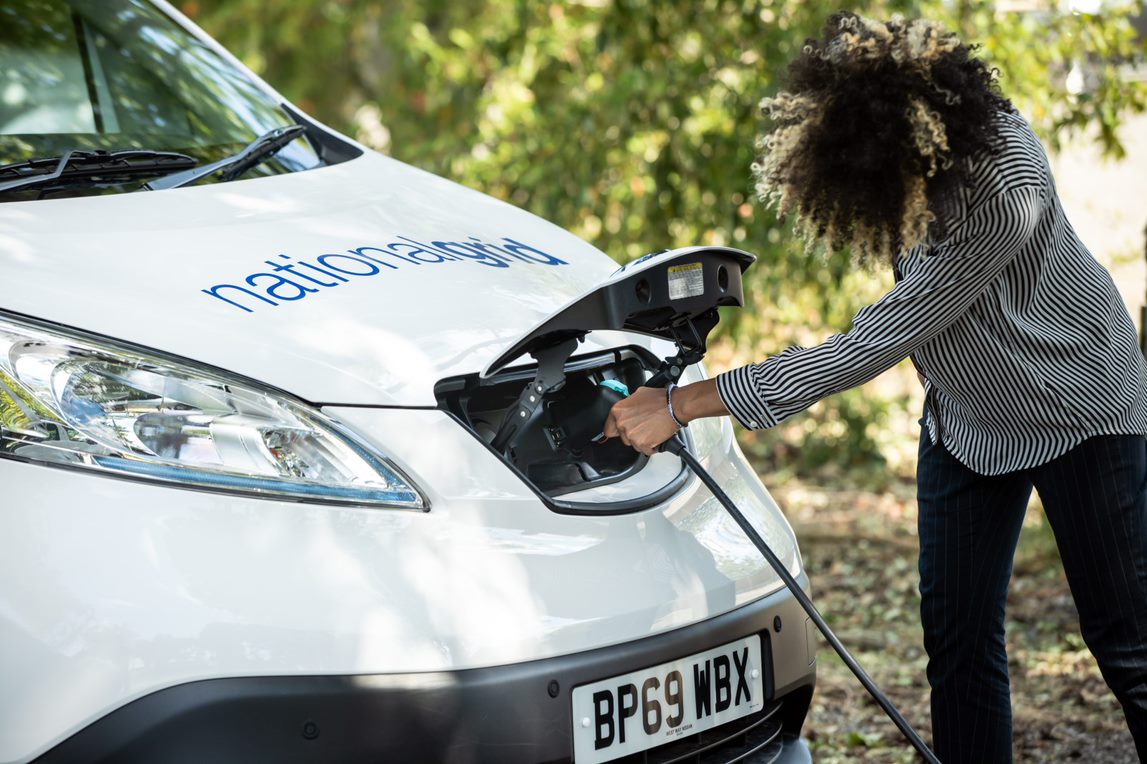New study examines charging needs from the electrification of buses and fleet vehicles

A new study from National Grid and Hitachi ABB Power Grids finds that proactive planning and coordination to meet the charging needs of a large fleet electric vehicles, such as buses and delivery trucks.
The transition toward electrification of commercial vehicle fleets is seen as huge element of net-zero strategies. The study, The Road to Transportation Decarbonization: Understanding Grid Impacts of Electric Fleets, was done to gain a better understanding of the charging needs of electric medium- and heavy-duty vehicles (MHDVs), such as buses, package delivery vans, freight trucks, and others. It revealed that coordinated planning between utilities, fleet operators, and state and local governments will be required to meet those needs.
“The electrification of fleets of vehicles, such as delivery vans and buses, offers a big bang for our buck in the fight to reduce emissions and decarbonize our transportation sector,” Brian Gemmell, chief clean energy development officer at National Grid, said. “This study demonstrates why it’s important that we work together with our communities, state, local, and business stakeholders to prepare for the electrification of medium- and heavy-duty vehicles, and why we need to start now to ensure the clean fleet transition progresses at the pace needed to meet decarbonization goals.”
Electrification of fleet vehicles is a significant opportunity to quickly reduce carbon emissions. In states like New York and Massachusetts, fleet vehicles make up 3 to 4 percent of vehicles but around a quarter of on-road emissions.
“The shift toward electric vehicles is one of the most critical steps in the broader evolution toward a carbon-neutral energy system,” Anthony Allard, executive vice president and head of North America for Hitachi ABB Power Grids, said. “Strong collaborations with key partners in the energy ecosystem, such as this study with National Grid, will help ensure that we are prepared to accelerate this transition and meet our sustainability goals, while maintaining the flexibility and resiliency of the grid.”
The study revealed that portions of the electric grid could eventually be overloaded by these large vehicles’ charging needs if system upgrades or alternative solutions are not progressed in tandem with electric MHDV adoption. This is particularly true where vehicle fleets are “clustered” in certain areas.
It recommends that critical stakeholders – utilities, system operators, fleet operators and policymakers – act now to begin forecasting and planning for the medium- and long-term impacts of fleet electrification. It suggests that solutions consider an end-to-end approach: transmission, distribution, and distributed resources, in addition to managed charging programs.
